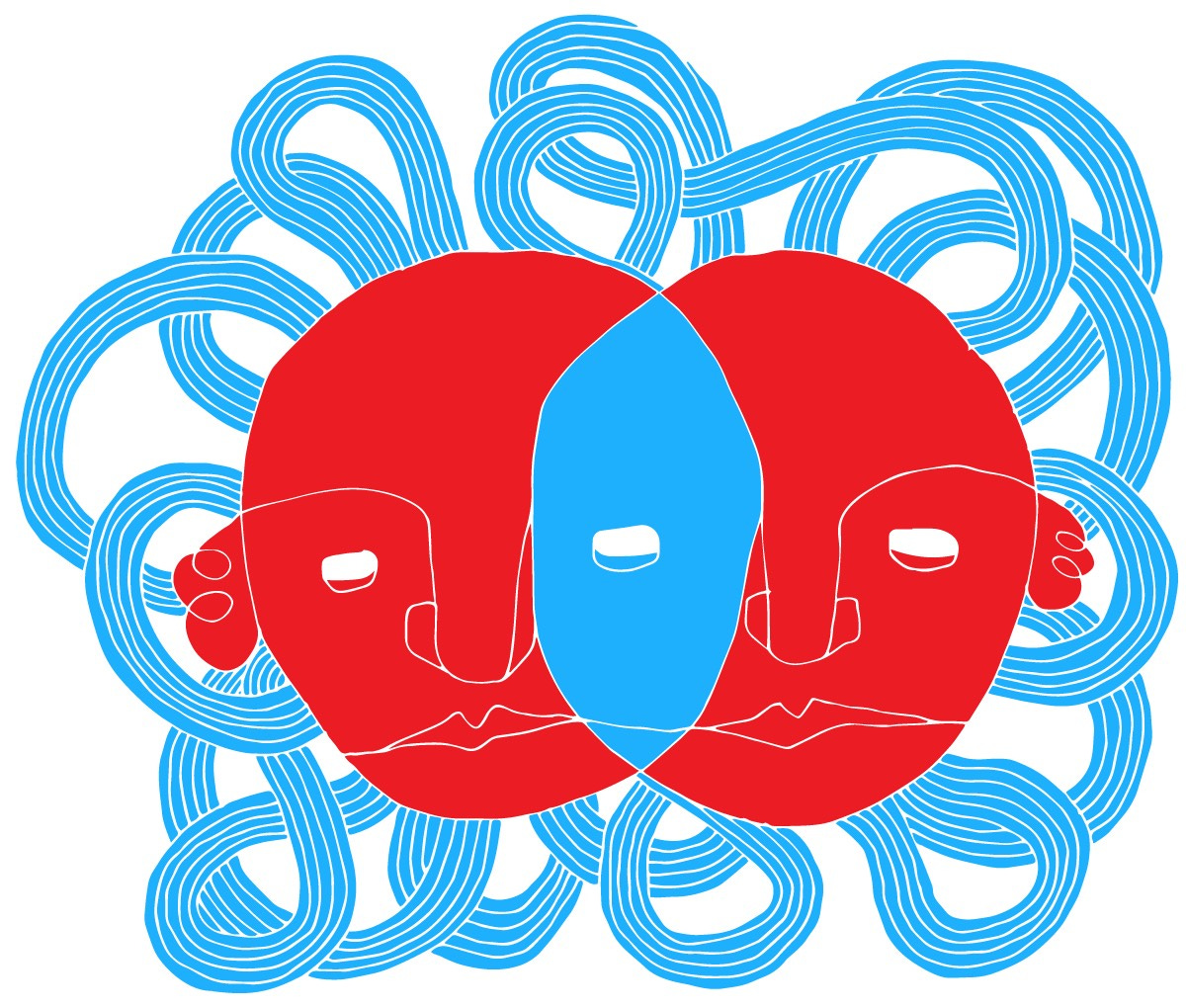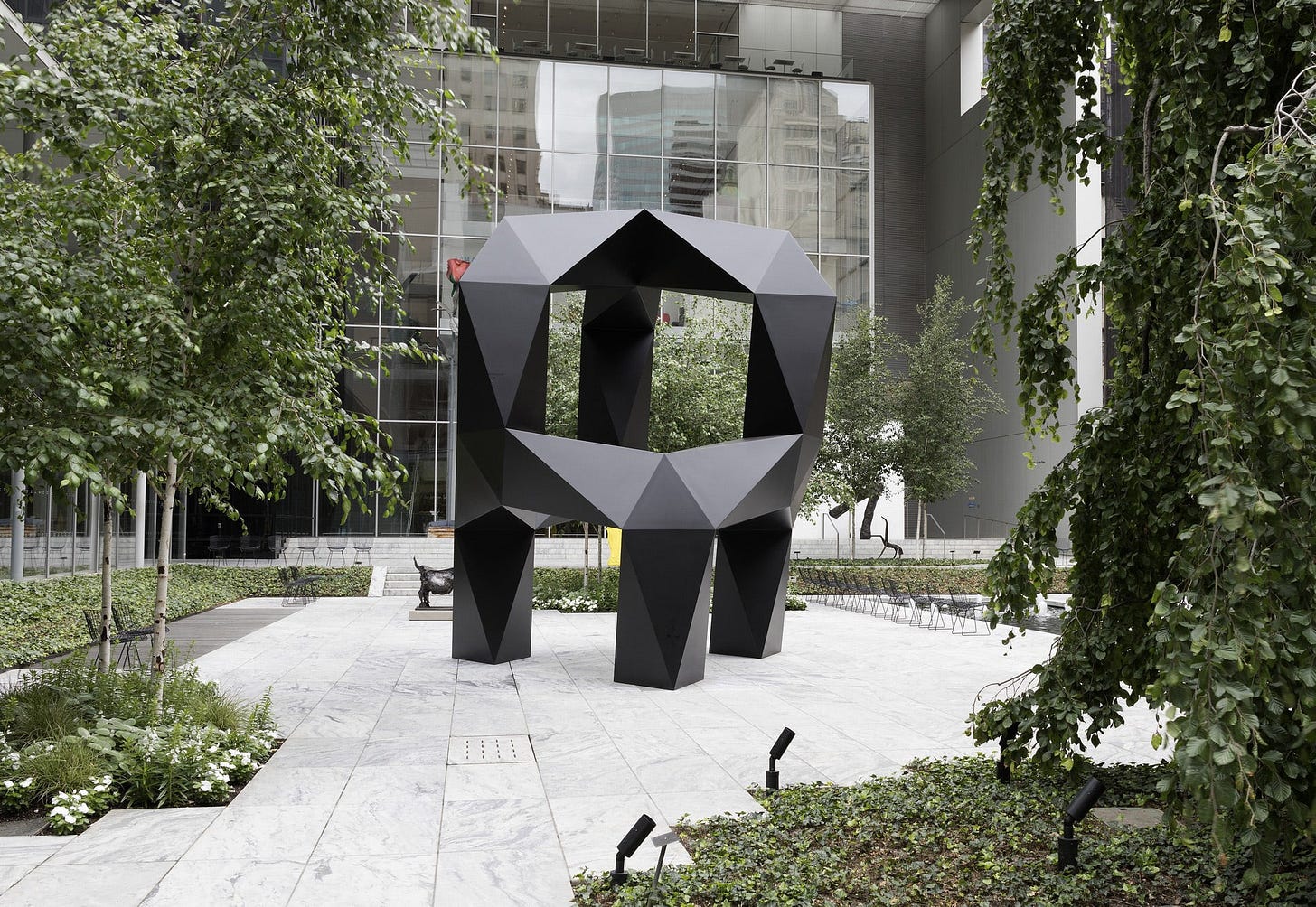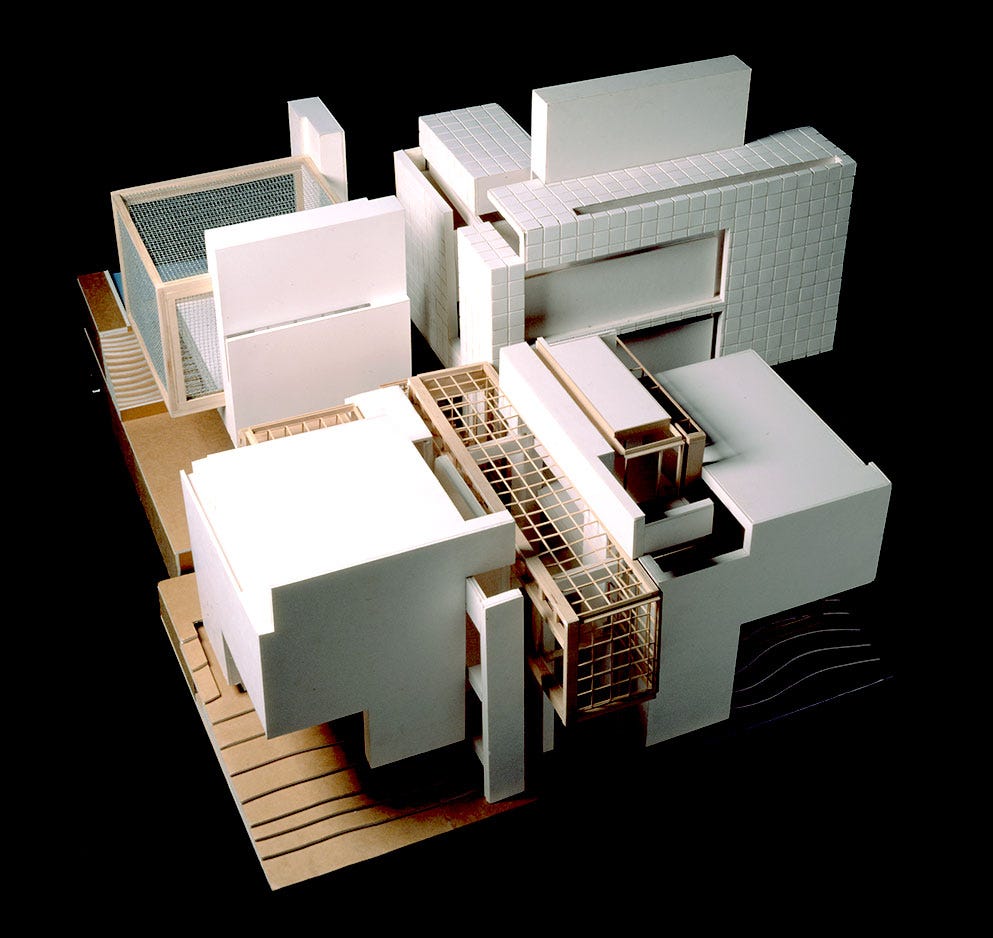April 2025: Design Fiction, Against Platforms, an Avant-Garde catalog for Standard Cables
Plus an experimental residential prototype and why we need to imagine new futures.
In March, we spoke with writer and technologist Mike Pepi about platforms and designer and engineer Julian Bleecker about design fiction.
EDITOR’S NOTE
I told Mike Pepi, my guest on a recent episode, that his book at first didn’t seem like the type of book I’d talk about on the show. Against Platforms is a book of technology criticism and Pepi turns his gaze on the ideology of Silicon Valley. What I quickly realized reading the book, however, that Against Platforms is more than a book of technology criticism; it’s also a meta-criticism about how platform-thinking has influenced so much of our lives. In this way, the issues he’s writing about are also design issues. We had a fascinating conversation and one that proved popular with listeners. I came away from that episode thinking design media should turn some of its gaze to the Silicon Valley takeover of design, wrestling with the implications of a particular ideology on our institutions.
Another way to wrestle with the Silicon Valley ideology, I think, is design fiction. This is what my other guest this month, Julian Bleecker is doing in different ways. Bleecker coined the term design fiction almost twenty years ago and in the last two decades, it’s become a serious area of study. At its core, design fiction creates objects from the near-future to help us understand the present. In other words, design fiction makes ideologies tangible and in turn, allows us to imagine alternatives. In this moment, it sometimes seems we need alternative stories more than ever. I’m hoping I can continue these conversations on the show throughout this year.
As a reminder, Scratching the Surface is made possible because of those paid subscriptions. If you like what we do here and want to support us, you can upgrade your subscription for just $5/month or $50/year. Paid members get bonus interviews each month and help keep the show free for everyone, all the time. Thanks for listening.
See you next month,
Jarrett
SCRATCH
Recent essays, interviews, and stories published on our Scratch platform.
How Ian Lynam wrote a history of Japanese Graphic Design
For our members-only newsletter, we caught up with Ian Lynam to talk about his new book on Japanese graphic design history. Sign up to support the show and get access to this conversation!
Good Color by Brian LaRossa
A new short story from former guest and friend-of-the-show Brian LaRossa’s new Substack.
Tony Smith’s career is a study in shuttling among disciplines by James Voorhies
We’re pleased to publish an exclusive excerpt of the preface from the new book on the career of architect and sculptor Tony Smith.
PAST GUESTS
Recent work, writing, and news from former guests of Scratching the Surface.
🏆 ”I aspire to be like water:” Oliver Wainwright on this year’s Pritzker winner Liu Jiakun. (The Guardian)
👏 Edwin Heathcote on 2025 Pritzker prize winner Liu Jiakun. (Financial Times)
📖 Aaron Betsky thinks Diller Scofidio + Renfro’s latest monograph challenges the Essence of Architectural Media. (Architect)
🎧 Federica Zambeletti hosts Kate Crawford and Marina Otero Verzier on the first episode of Space Between, a new podcast from KoozArch. (KoozArch)
🧱 Bricks are back: Justin Davidson writes that even builders of glass towers rediscovering texture, shadow, and drama. (Curbed)
🌱 Justin McGuirk is curating a new exhibition for the Design Museum that explores design based on needs of nature and animals. (The Guardian)
🤔 In a new Gap ad, Jack Murphy writes, Parker Posey strutcs her way through Eric Owen Moss Architects’s (W)rapper building in LA. (The Architect’s Newspaper)
🫶 Letter from Pasadena: Mimi Zeiger on the Los Angeles Wildfires. (Azure)
🚦Rory Hyde on how new architecture galleries are exploring what happens when architecture is exhibited in the street. (Architecture, Au)
📸 Jarrett Earnest asks why so many painters are remaking famous images? (Aperture)
🚞 Prada Frames’ 2025 Edition, curated once again by Formafantasma, to discuss mobility inside Gio Ponti-designed train. (WWD)
👎 Ian Bourland thinks Opus, A24’s glossy horror-comedy, is another eat-the-rich horror film that falls flat. (Frieze)
BOOK ROUNDUP
Recent books that have arrived in the studio. All links are Bookshop.org affiliate links. If you order through Bookshop, we get some money to help support the show!
A Sign is… by Jeffrey Ludlow (ORO Editions)
Written by Jeffrey Ludlow (former creative director of Bruce Mau Studio and art director at 2x4), this might be the first design book I’ve seen focused on the sign. This collection of essays ranges from graphic taxonomy to pharmacy signs to historical overview. Beautifully designed and easy to read, it’s a book I’m sure I’ll return to and one I’m glad exists.
Emigre Fonts: Type Specimens 1986-2024
Admittedly, I sometimes forget that Emigre started not as a magazine but as a type foundry. And that that type foundry still exists and is still producing new typefaces. I won’t forget that now with this beautiful, massive collection from the Letterform Archive, archiving five decades of printed typespecimens from one of the most important type foundries in history.
Nkf: Piet Zwart's Avant-Garde Catalog for Standard Cables by Paul Stirton
I’ll never forget seeing Piet Zwart’s experimental catalogs for Standard Cables when I was a young design student. It didn’t look like what I thought a catalog was supposed to look like. You could do this, I remember thinking. I was taken back to that moment when the Letterform Archive’s new facsimile arrived on my doorstep: a beautifully designed package with additional commentary from Paul Stirton and and Philip Meggs allows me to look at Zwart’s work whenever I want, reminding us, again, that design can be fun and provocative.
READ/WATCHED/HEARD
Articles, books, videos, and other ephemera that caught our eye this month.
💔 Ricardo Scofidio, Boldly Imaginative Architect, Dies at 89. (NYT)
🪴 M. Paul Friedberg, Landscape Architect Who Celebrated the City, dies at 93. (NYT)
😍 Designer Dan Friedman used folding screens, fountains, and occasionally trash to transform his Fifth Avenue Apartment. (Curbed)
🆕 Tulane’s School of Architecture is renaming itself The Tulane School of Architecture and the Built Environment. (Tulane)
🪦David M. Childs, architect of 1 World Trade Center, dies at 83. (NYT)
JOB WATCH
People on the move in and around the design worlds.
Joseph Specter named Frank Lloyd Wright Foundation president and CEO.
POSTSCRIPT
In the last few months, two fascinating books on Peter Eisenman have come out: Notes on Peter Eisenman is a collection of essays from contemporary architects and writers on the influence of Eisenman’s thinking and Building Institution by Kim Forster is a massive history of the Institute for Architecture and Urban Studies, the non-profit which Eiseman founded and directed through the 80s. Because of reading these, I’ve been returning to Eisenman’s work a lot lately and spent a lot of time this month looking at House X again. “Most houses are conceptually vertebrate. That is, in addition to their literal, necessary condition of structure they are metaphorically vertebrate. They have a center, usually a hearth or a stair; their roofs pitch from the center, and their construction exhibits a concern for an overall centrality,” Eisenman wrote. “The center expresses both the functional core and conceptual unity of the house. In House X, the center is nothing.”










